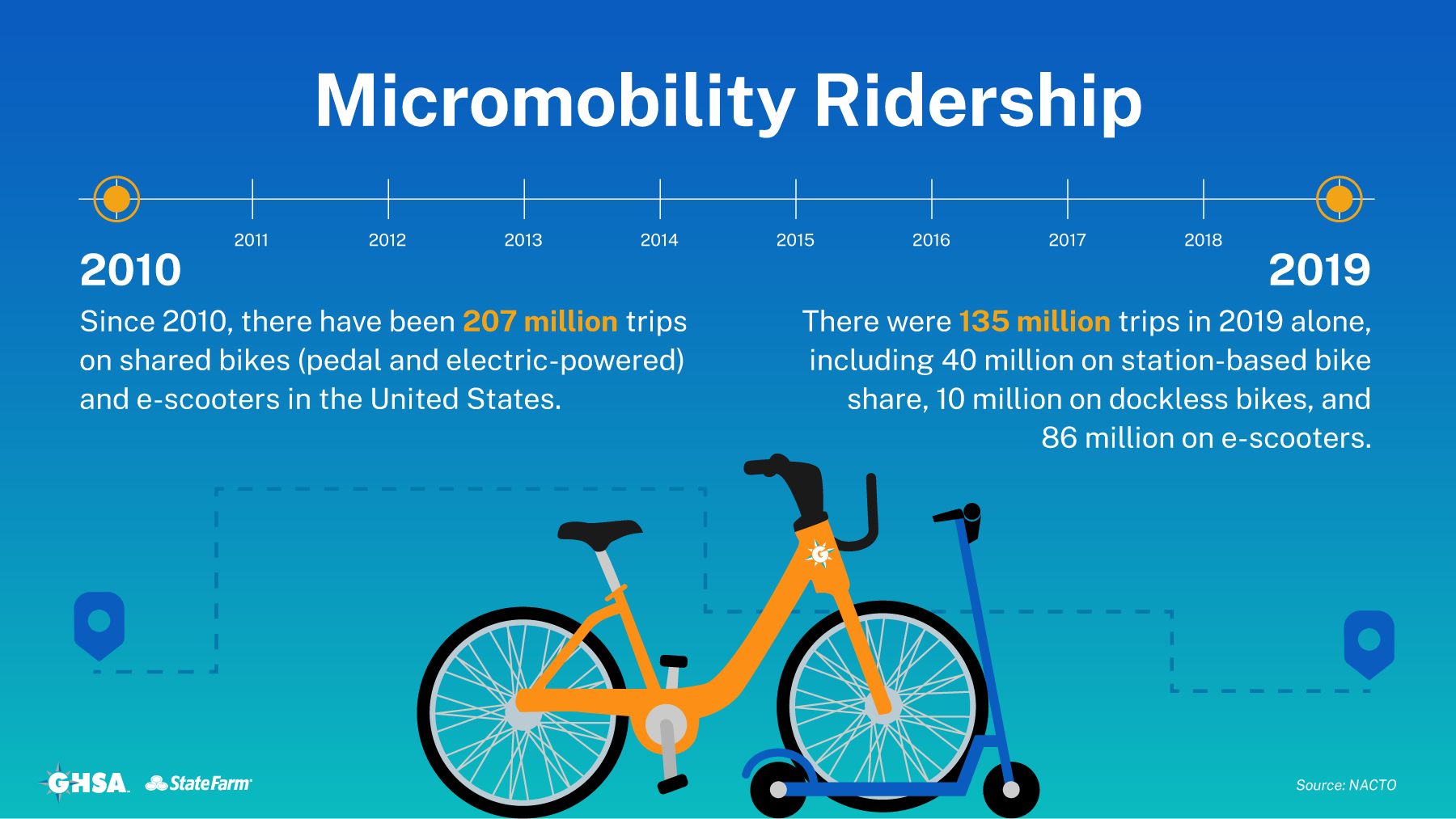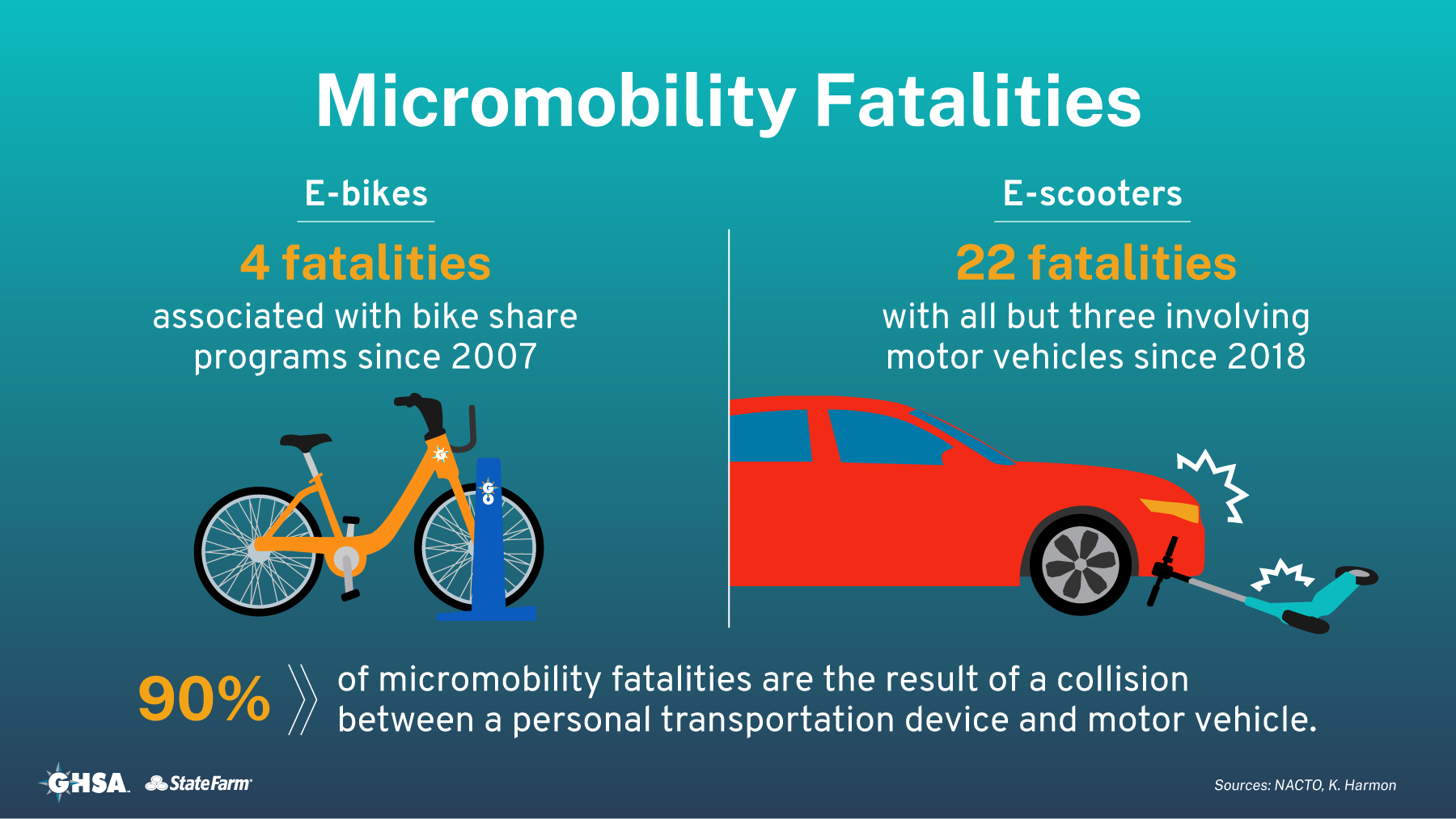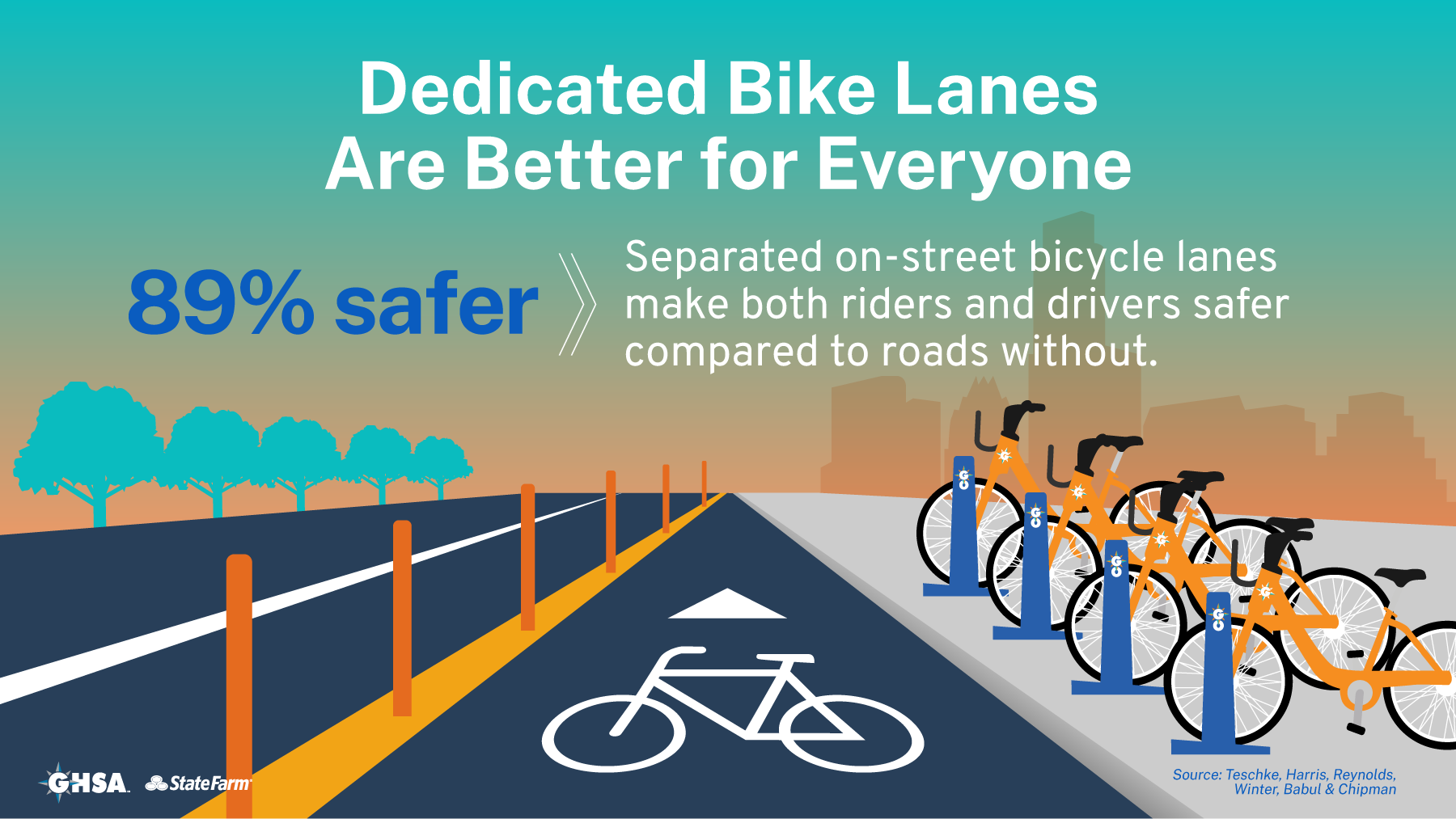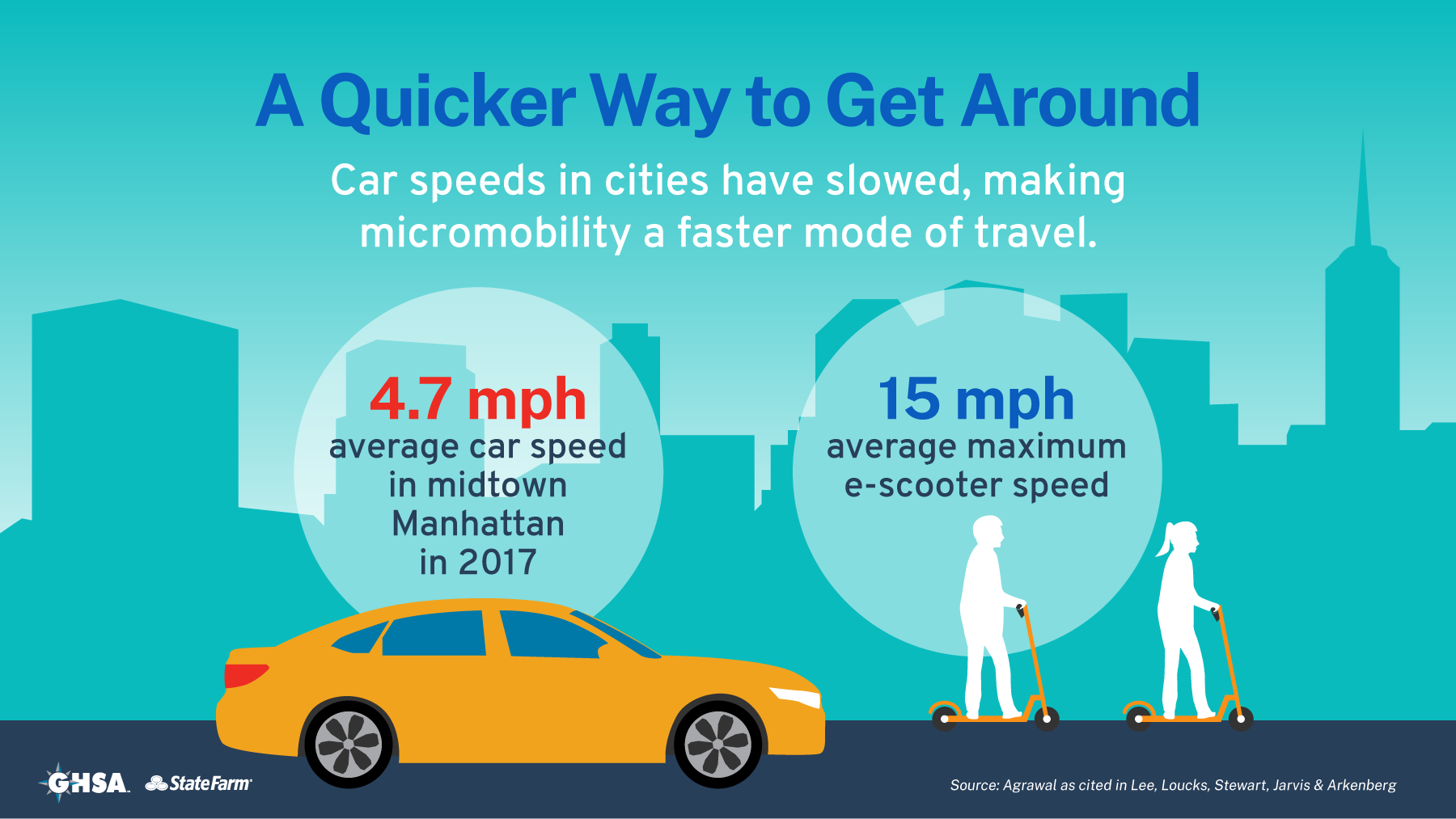Understanding and Tackling Micromobility: Transportation's New Disruptor


This GHSA report explores six challenges related to micromobility – oversight, funding, data collection, enforcement, infrastructure and education.


This GHSA report explores six challenges related to micromobility – oversight, funding, data collection, enforcement, infrastructure and education.
Pedal powered and electric bicycles and electric scooters, skateboards and skates are part of an evolving class of vehicles referred to as micromobility or personal transportation devices (PTDs). They’re typically low speed, light weight and partially or fully motorized and may be personally owned or part of a shared fleet. Micromombility experienced significant growth during the past decade fueled by the introduction of dockless e-scooters in 2018. While PTDs are predominantly used in cities and on college campuses, this viable and convenient mode of transportation could soon start appearing on suburban and small-town streets – if it hasn’t already done so.
Recognizing micromobility’s potential and that these devices are sharing the road and sidewalks with motor vehicles, traditional bicycles and pedestrians, there are inherent safety issues. And contrary to news reports and public perception, the pandemic has been a boon rather than a death knell for shared bikes and scooters in many locations. For this reason, SHSOs cannot stand on the sidelines. This publication offers concrete examples of what SHSOs can do, in partnership with others, to ensure PTD riders and all road users safely share the road.
This publication was funded by State Farm® and written and researched by Pam Shadel Fischer, GHSA’s Senior Director of External Engagement, with guidance from an expert panel. It is not intended to be inclusive of all policies or programs, nor does inclusion of a policy or program imply endorsement by GHSA, State Farm® or the expert panel.
The report features information about the new ICD-10-CM micromobility injury mechanism codes that went into effect on Oct. 1, 2020 (see page 22). States are encouraged to share the latest version of this announcement with their Traffic Records Coordinating Committee and public health officials to promote the codes’ widespread adoption.
*Served in an advisory capacity
Please cite the Governors Highway Safety Association when using the graphic below. Right click on the graphic, then select "save image as..." to download it. If you're sharing on social media, consider tagging us at @ghsahq on X/Twitter, @GHSAhq on Facebook and Governors Highway Safety Association (GHSA) on LinkedIn.



